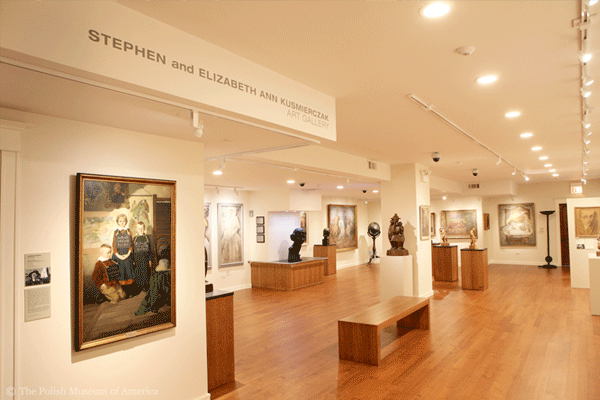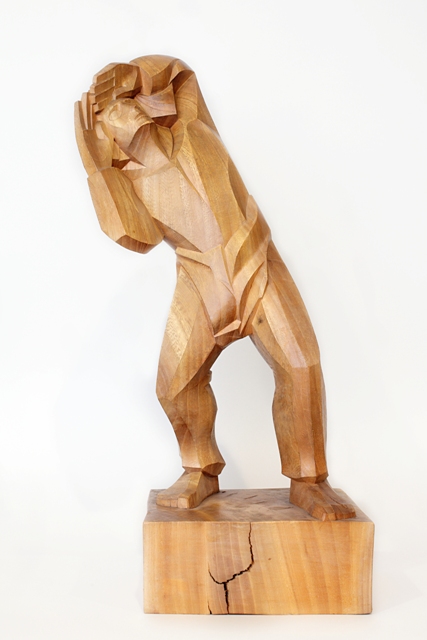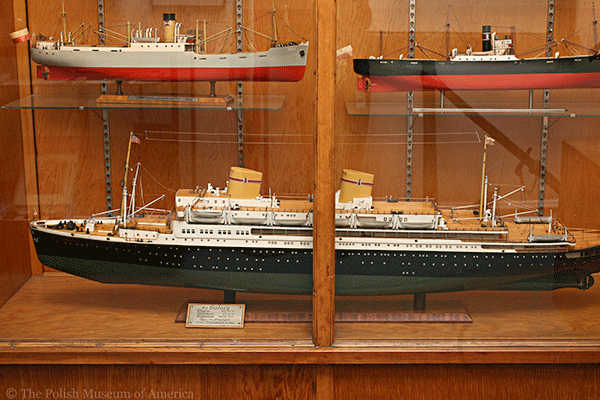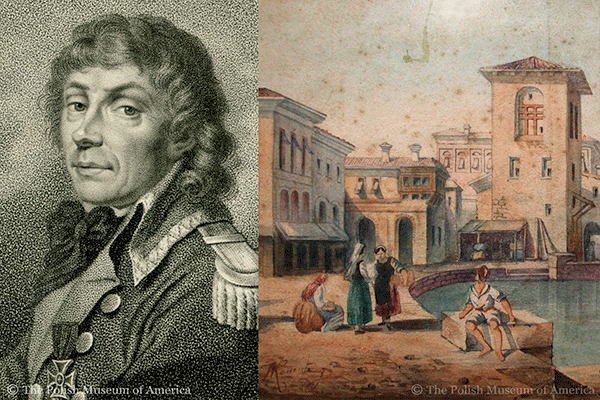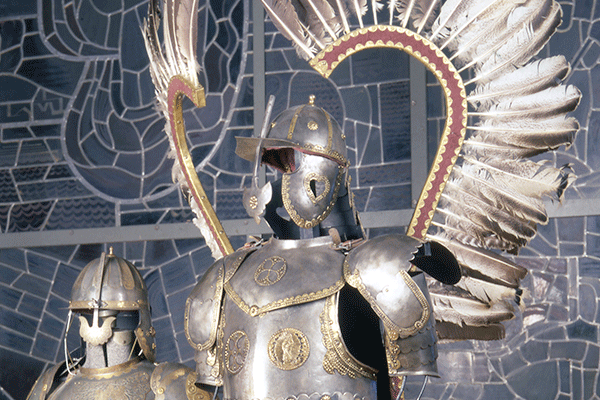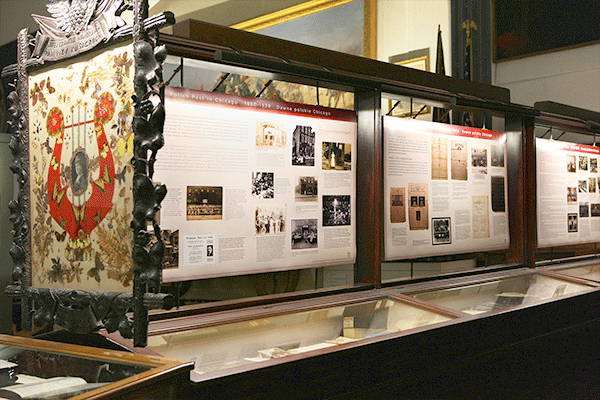Stanisław Szukalski collaborated with Salvador Dali and inspired H. R. Giger. Maria Werten taught illustrators from Walt Disney Studios. Jan Henryk Rosen decorated churches in Washington and Chicago. Polish artists – emigrants – found success in the United States. From amongst 42 artists, 48 works spanning the years 1901-1947 have been selected and are presented in the Stephen and Elizabeth Ann Kusmierczak Art Gallery.
The works of these distinguished artists – the most abundant representation from the 1930s – show us the dominant trends in Polish art during the Interwar Period, receiving awards both in Poland and abroad. The world appreciated the freshness and originality, as well as the supreme workmanship. The years 1918-1939 were characterized by a variety of groups and artistic trends.
Olga Boznańska’s Madame Paris exemplifies post-impressionism; Czesław Rzepiński painted in the manner of Polish colorism, as did Tymon Niesiołowski, who belonged to the Warsaw group, Rytm. Jan Zamoyski was connected with the artistic society, Bractwo Św. Łukasza. Ludwik Tyrowicz was a member of the Ryt Graphic Artist Association. Andrzej Pronaszko represented formism. His simple stylistics, geometric slants, and influences of cubism brought him close to Art Deco, similar to that of Michał Rouba.
The paintings, sculptures, prints, and handicraft arts – originally presented at the Polish Pavilion at the World’s Fair in New York in 1939-1940 – are the core of the art collection of The Polish Museum of America (PMA). The outbreak of World War II prohibited the return of the exhibits to Poland, and because of the agreements between Stefan Ropp, General Commissioner of the Polish Pavilion, Mieczysław Haiman, PMA Director, and Józef L. Kania, PRCUA President, some items came to Chicago in 1941. It was just a part of the 11,000 objects which were originally transported from Poland to New York on the MS Batory and the MS Piłsudski in 1939. The impressive presentations at the Polish Pavilion and its spectacular success in the United States is best represented by the monumental stained glass, Symbol Polski odrodzonej [Symbol of Poland Reborn] designed by Mieczysław Jurgielewicz, and displayed in the PMA Great Hall. It is one of the largest secular stained glass works in the USA. The Gallery displays a miniature stained glass by Alojzy Sawicki, which was also exhibited at the Honorary Hall of the Polish Pavilion.
A valuable source of the Interwar Period art at the PMA is the 1945 donation by Maria Werten, artist and promoter of Polish art in the United States. The expressive wooden sculptures from the Zakopane School inspired by folklore are interesting examples of Polish Art Deco, depicting the trend of defining a national style.
To illustrate the various trends in Polish arts of the 20th century, the Gallery presents paintings with historical themes from private collections. The painters – Wojciech Kossak, Jerzy Kossak, and Jan Styka – belong to two famous artistic families.

